EPUAP (EUROPEAN PRESSURE ULCER ADVISORY PANEL) PRESSURE ULCER CLASSIFICATION 2019
CATEGORY 1
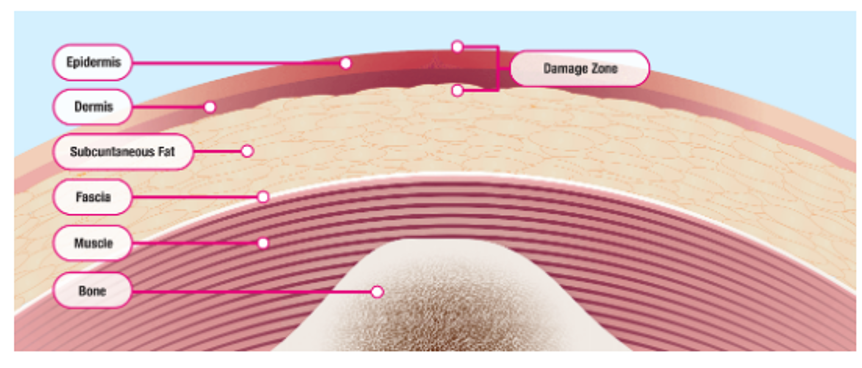
Category/Stage 1: Non-blanchable erythma
Intact skin with non-blanchable redness of a localised area usually over a bony prominence. Darkly pigmented skin may not have visible blanching; its colour may differ from the surrounding area. The area may be painful, firm, soft, warmer or cooler as compared to adjacent tissue. Category 1 may be difficult to detect in individuals with dark skin tones. May indicate “at risk” persons.
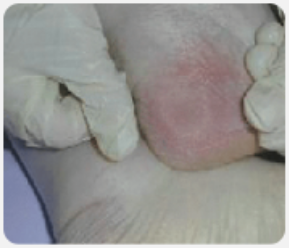
CATEGORY 2

Category/Stage 2: Partial thickness
Partial thickness loss of dermis presenting as a shallow open ulcer with a red pink wound bed without slough. May also present as an intact or open/ruptured serum filled or serosanguinous filled blister. Presents as a shiny or dry shallow ulcer without sloughing or bruising. This category should not be used to describe skin tears, tape burns, incontinence associated dermatitis, maceration or excoriation. Bruising indicates deep tissue injury.
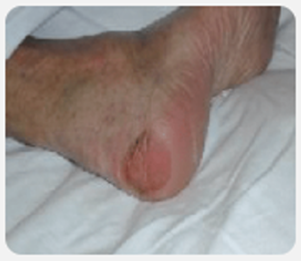
CATEGORY 3
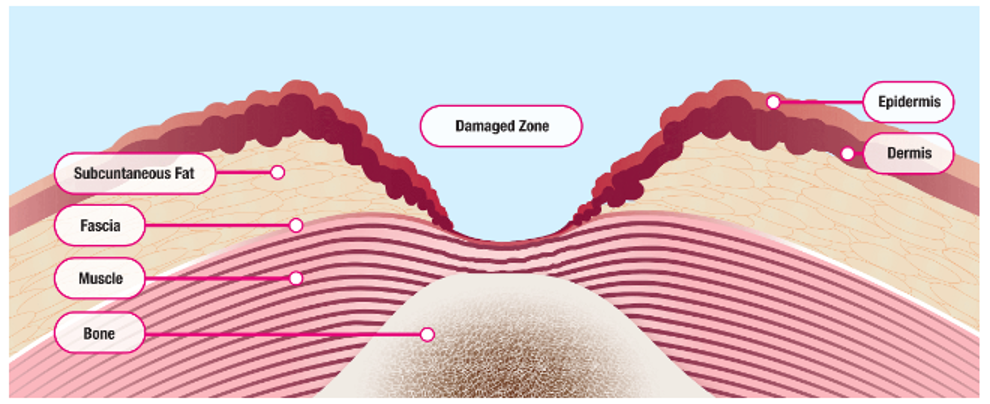
Category/Stage 3: Full thickness skin loss
Subcutaneous fat may be visible, but bone, tendon or muscle are not exposed. Slough may be present but does not obscure the depth of tissue loss. May include undermining and tunnelling. The depth of a category/stage 3 pressure ulcer varies by anatomical location. The bridge of the nose, ear, occiput and malleolus do not have (adipose) subcutaneous tissue and category/stage 3 ulcers can be shallow. In contrast, areas of significant adiposity can develop extremely deep category/stage 3 pressure ulcers. Bone/tendon is not visible or directly palpable.
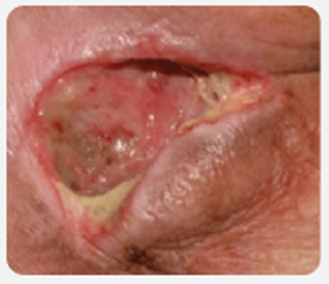
CATEGORY 4
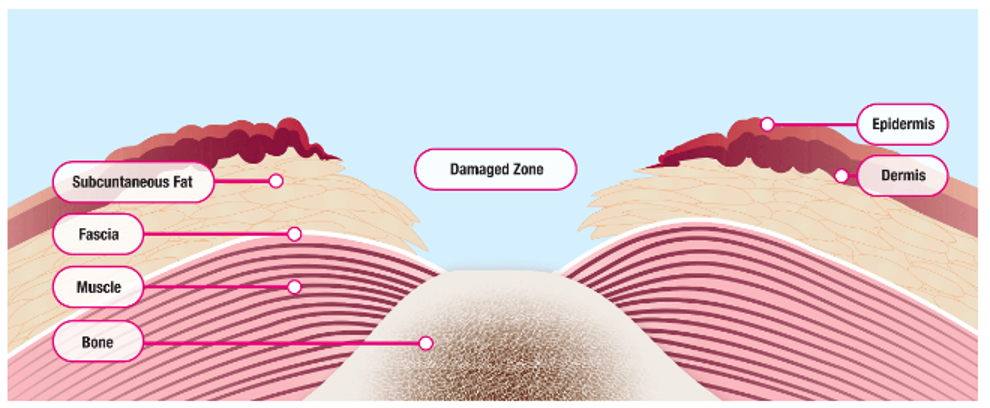
Category/Stage 4: Full thickness tissue loss with exposed bone, tendon or muscle
Slough or eschar may be present. Often includes undermining and tunnelling. The depth of a category/stage 4 pressure ulcer varies by anatomical location. The bridge of the nose, ear, occiput and malleolus do not have (adipose) subcutaneous tissue and these ulcers can be shallow. Category/stage 4 ulcers can extend into muscle and/or supporting structures (e.g. fascia, tension, or joint capsule) making osteomyelitis or osteitis likely to occur. Exposed bone/muscle is visible or directly palpable.

UNSTAGEABLE
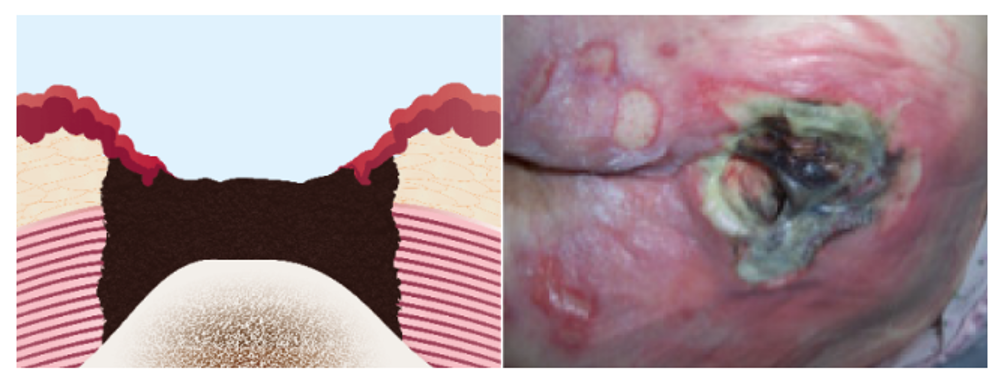
Full-thickness loss in which actual depth is completely obscured by slough and/or eschar in the wound bed. Until enough slough and/or eschar is removed to expose the base of the wound, the true depth and therefore stage cannot be determined, but it will be either a Category 3 or 4.
DEEP TISSUE INJURY
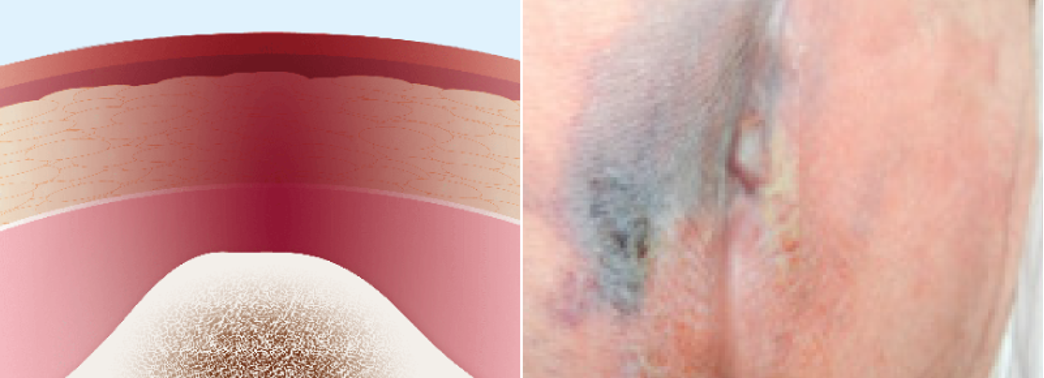
A purple or maroon localized area of discolouration intact skin or blood-filled blister due to damage of underlying soft tissue from pressure and/or shear. The area may be preceded by tissue that is painful, firm, mushy, boggy, warmer or cooler compared to adjacent tissue. Evolution may include a thin blister over a dark wound bed. The wound may evolve and become further covered by thin eschar.
DTI starts deep within tissue and does not usually become apparent until about 24–72 hours after the event that caused the tissue damage. Wounds UK (Consensus 2017)
In patients with dark-toned skin, the skin of affected areas may be darker or lighter, and palpation
to detect changes in tissue texture or temperature is particularly important (Black et al, 2016).